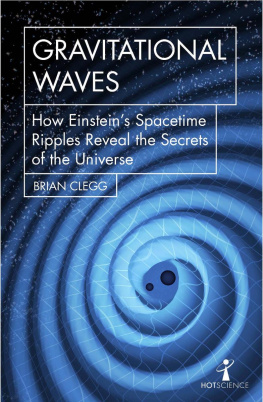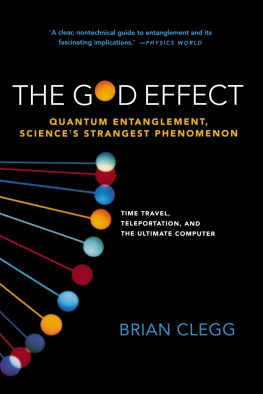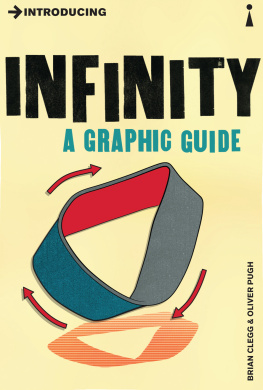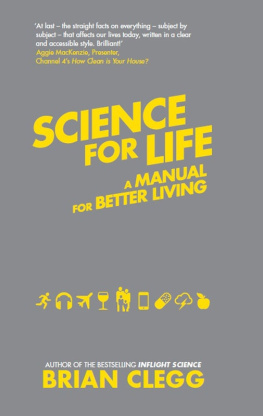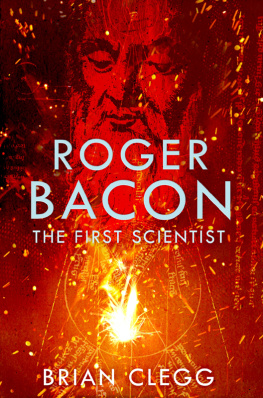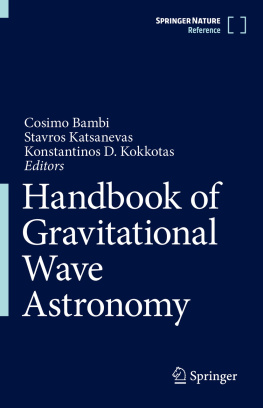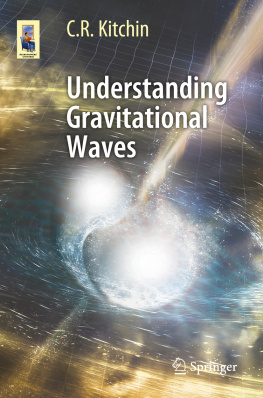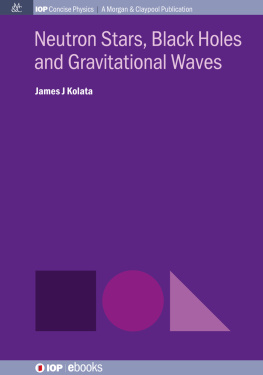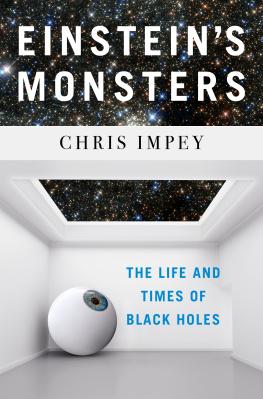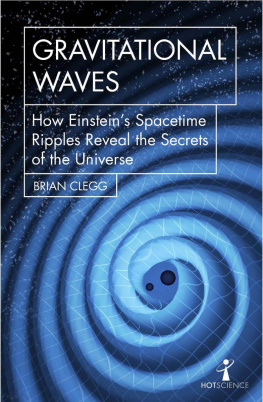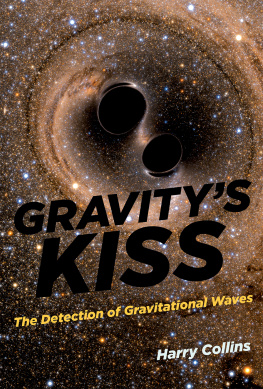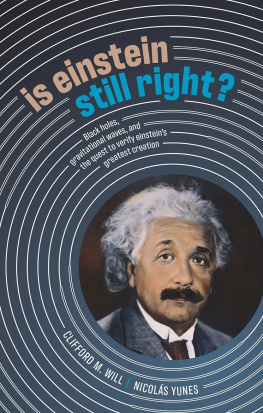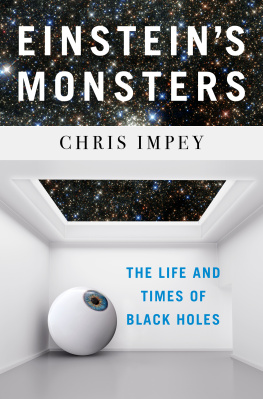My thanks to the team at Icon Books involved in producing this series, notably Duncan Heath, Simon Flynn, Robert Sharman and Andrew Furlow. Ive had great support in writing this from LIGO notably Michael Landry the ESA and the Max Planck Institute. A particular thank you to Kip Thorne for his wonderfully informative Andrew Chamblin Memorial Lecture at the Department of Applied Mathematics and Theoretical Physics in Cambridge.
1846 Faraday gives his Thoughts on Ray-Vibrations lecture in which he speculates in passing that gravitation may involve some kind of travelling wave
1916 Einstein writes his first paper on gravitational waves as an outcome of his general theory of relativity
1918 Einstein issues a second paper correcting an error in the first
1922 Arthur Eddington suggests Einsteins waves are imaginary, created by the way the mathematics was used
1936 Einstein writes to Max Born, telling him that after work with Nathan Rosen, he no longer believes gravitational waves exist
1937 After corrections to his paper with Rosen, Einstein revives gravitational waves, but believes they are so weak they will never be observed
1955 Joseph Weber studies gravitational radiation with John Wheeler at the Institute for Advanced Study
1957 Richard Feynman shows that gravitational waves could do work and hence be detected
195860 Weber begins construction of resonant bars in an attempt to detect gravitational waves
1962 Mikhail Gertsenshtein and Vladislav Pustovoit publish the first paper on the theoretical use of interferometers in gravitational wave detection
1967 Rainer Weiss publishes first practical design for gravitational wave interferometers
1968 Kip Thorne begins theoretical work on gravitational wave detection
1969 Weber claims the first detection
1972 A detector based on Webers principles travels to the Moon on Apollo 17
1974 Webers findings are largely dismissed
1974 Hulse and Taylor make indirect observation of gravitational waves due to their impact on orbital decay
1975 Prototype interferometer with 3-metre arms built by German/UK team in Garching
1980 Funding obtained for planning for a large-scale interferometer in the US
1981 Prototype with 40-metre arms built at Caltech
1986 The LIGO project gets its first unifying project director, Rochus Vogt
1991 The first major LIGO funding obtained
1994 Ground broken on building the Hanford observatory
1995 Ground broken on the Livingston observatory
1995 Work on the European GEO600 detector started
2002 Initial LIGO goes live and runs to 2010 no waves detected
2005 Useable models of black hole interaction and the waves they would produce developed
2006 GEO600 reaches expected sensitivity no waves detected
2014 BICEP2 project team claim to have detected gravitational waves in the cosmic microwave background radiation later retracted
2015 Advanced LIGO goes live
14 September 2015 First gravitational wave detection
11 February 2016 LIGO first gravitational wave detection made public
1 June 2017 Detection announcements continue with the third detection with a high confidence
There are times when those working on a major science project receive public accolades. Typically, its when the data from a live science run is released, and what has been an intense period of private work becomes public property, to be dissected by the researchers scientific peers and celebrated by the worlds press. But on 14 September 2015, the huge team working on LIGO more formally, the Laser Interferometer Gravitational Wave Observatory had no such expectations. No one realised that 50 years of fruitless work was about to be rewarded in an unexpected fashion.
The immense LIGO experiment, covering two sprawling sites in the US and supported by over 1,000 scientists working around the world, was undergoing an engineering run. This was routine technical testing before the gravitational wave observatory would go live a few days later. It was the eighth and final cycle of fine-tuning before things might get interesting. Yet around 7.00am Eastern Standard Time midday in the UK a first email was sent out to interested parties that signalled the beginning of the biggest change to astronomy since the introduction of telescopes.
On that day, our understanding of the universe took a leap forward.
The gravity detectives
To call LIGO an observatory appears to be a dramatic understatement, though that is exactly what it is. It comprises two vast sites over 3,000 kilometres (1,865 miles) apart. Each of the near-identical facilities, one based in Livingston, Louisiana and the other at Hanford, Washington state, is home to a pair of 4-kilometre (2.5-mile)-long tubes, 1.2 metres across, set at right angles to each other to form an L-shape. At each site, a laser passes along the pair of tubes to reflect off mirrors at the ends many times before the beams are brought together to form an optical interference pattern, a tiny set of fringes that gives a visible warning of incredibly small changes. The slightest variation in the length of the beams will produce a detectable effect, a change that was expected to happen in the presence of gravitational waves ripples in the fabric of space and time that had been predicted by Albert Einstein back in 1916, but had never been detected.
The vast twin systems, including those 4-kilometre lengths of metal tubing, contain hardly any air. The presence of vibrating air molecules would scatter the laser beams, introducing noise into the carefully monitored signal. Any sound vibrations and air currents buffeting the delicately suspended mirrors located at the ends of the tubes would equally destroy the detection process.
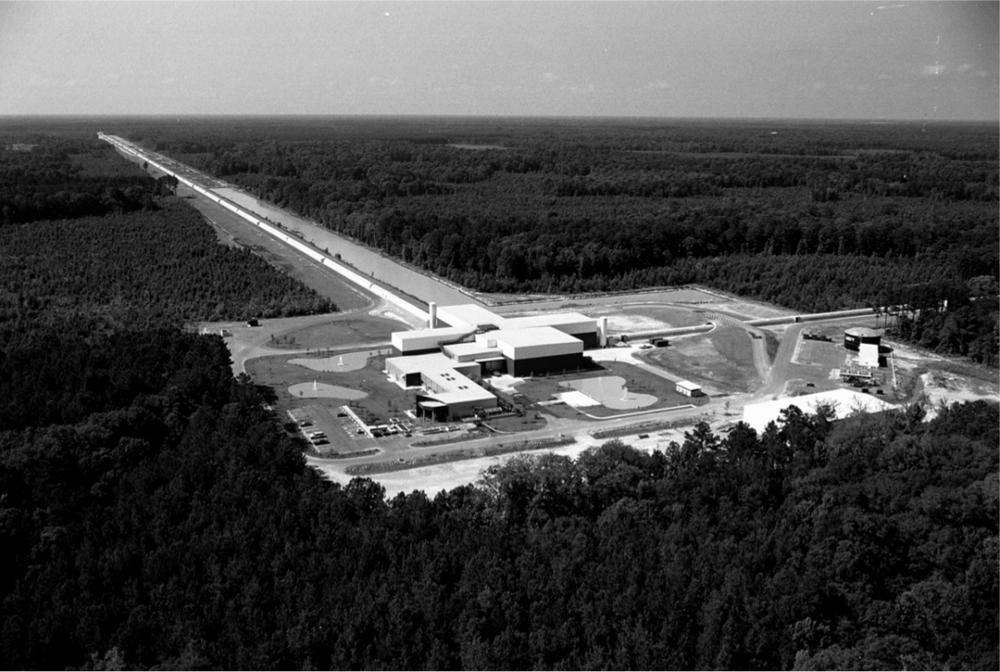
The Livingston detector site, Louisiana.
Caltech/MIT/LIGO Laboratory
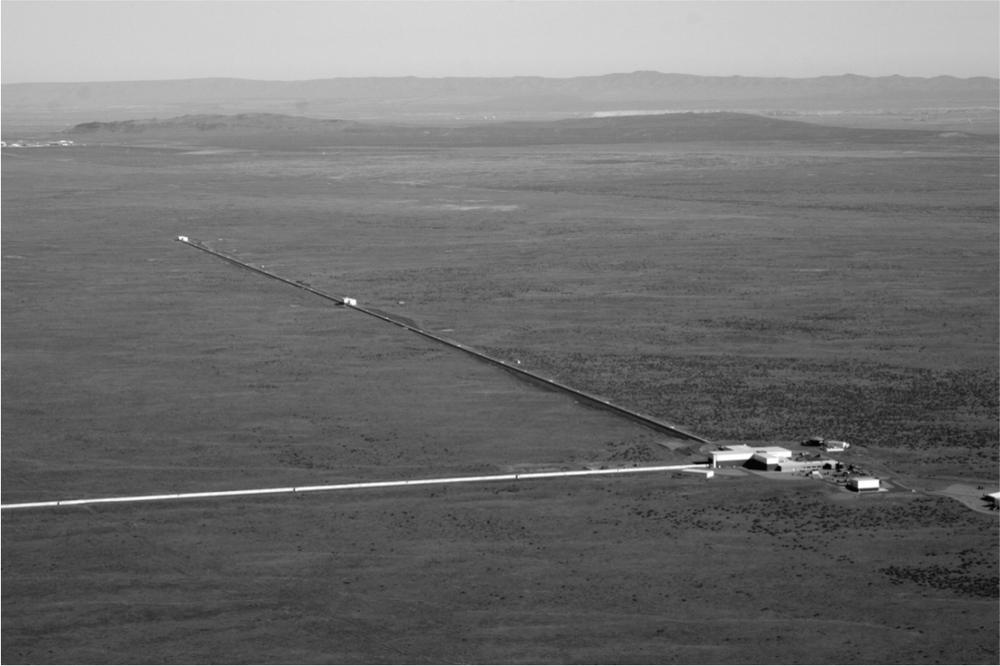
The Hanford detector site, Washington state.
Caltech/MIT/LIGO Laboratory
The pressure inside those tubes is a remarkable trillionth of the atmospheric level. This took 40 days of gradual pumping to achieve, during which time the tubes were heated to over 150C to expel as much gas as possible from the metal surfaces.
Just getting the tubes ready for that evacuation took immense care. Establishing delicate equipment in remote areas of the United States was not without its problems. The tubes are big enough, and took long enough to construct, for the local wildlife to take up residence. When a member of the team walked through the near-completed tubes at Livingston, he discovered that wasps, black widow spiders, mice and snakes had all moved in. And that meant acid-bearing urine leaving stains on the pristine stainless steel that would release vapour when the air was removed, requiring a major cleaning effort before that vacuum could be established. (That word stainless in stainless steel doesnt apply once acids are involved.)

